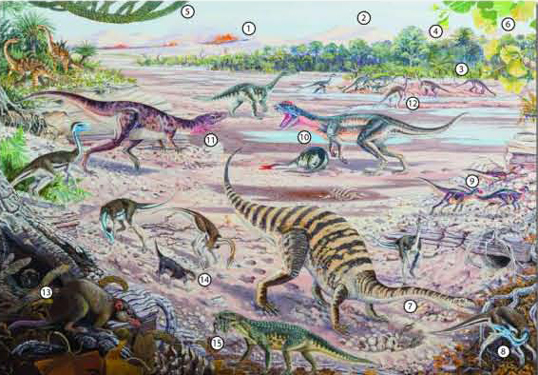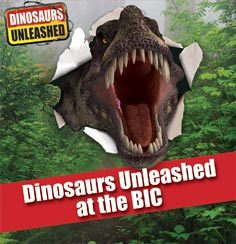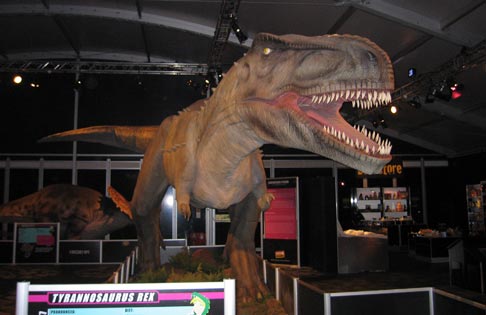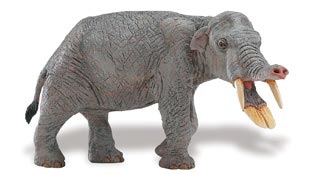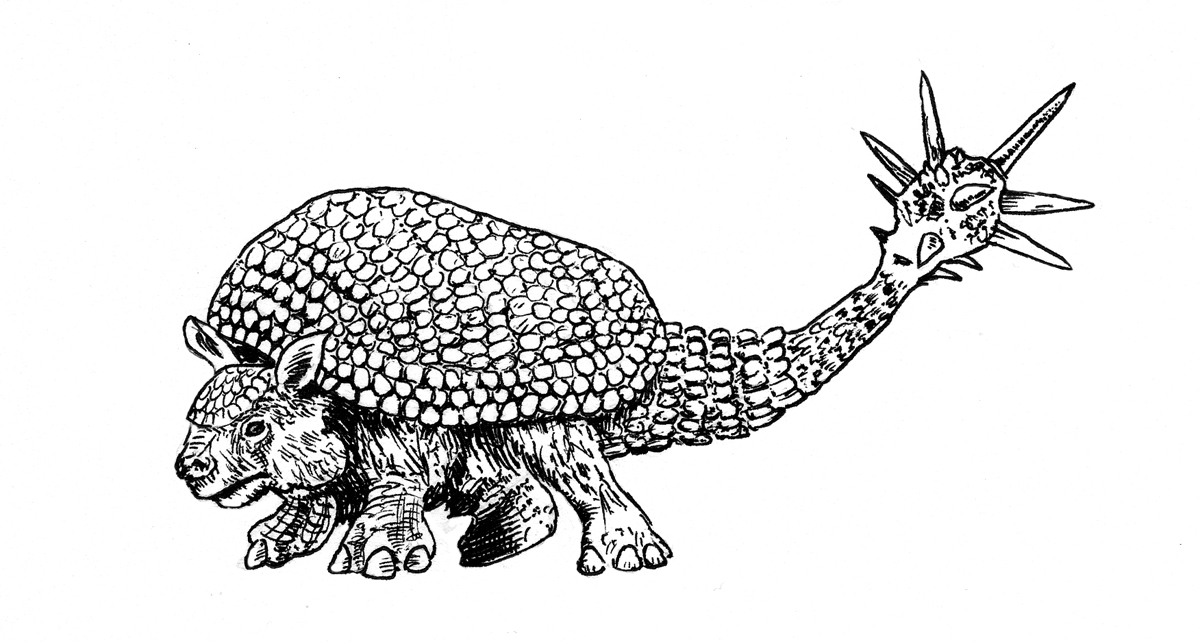American Study Suggests Torosaurus is Actually an Elderly Triceratops
The horned dinosaurs, known as ceratopsians were some of the very last kinds of dinosaur on Earth. These horned, long-frilled prehistoric monsters grew bigger than elephants and they ranged across North America from Colorado in the south up to Alberta and Saskatchewan in the north. Although, their bones and fossils have been studied for more than 120 years, new research suggests that the genus Torosaurus (Torosaurus latus) could well be examples of elderly Triceratops and not a separate and distinct genus from Triceratops at all.
The study of the main groups of advanced, horned ceratopsians – the centrosaurines and the Chasmosaurinae is marked by the enormous amount of classification and reclassification of these huge reptiles. Now a new study from leading American scientists proposes that those fossils assigned to the genus Torosaurus, a genus that was originally named in 1891, actually represent mature and elderly specimens of Triceratops (T. horridus).
Scale Drawings of Triceratops and Torosaurus
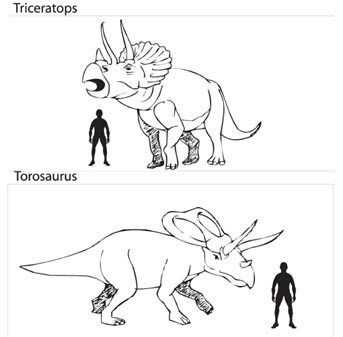
Picture credit: Everything Dinosaur
Torosaurus fossils are much rarer than Triceratops remains and the claim for specimens of Torosaurus being the animal with the one of the longest skulls of any known dinosaur has been cast into doubt if the entire genus is eliminated from the Chasmosaurinae family tree. More importantly, if this theory is proved correct, then it demonstrates that towards the end of the Cretaceous there was much less diversity amongst Dinosauria than previously thought.
The reclassification was first proposed at an international meeting of fossil experts last year. However, a paper on the research has been published in the scientific publication “the Journal of Vertebrate Palaeontology”. Montana State University researcher John Scannella and famous palaeontologist John “Jack” Horner lay out a detailed case for reassessing the fossils ascribed to the genus Torosaurus and placing these specimens under Triceratops as they suggest the Torosaurus fossils are just mature and much older specimens of Triceratops.
A Torosaurus Adult and Juvenile

The PNSO Torosaurus pair (Aubrey and Dabei) shown in right lateral view. Picture credit: Everything Dinosaur.
Picture credit: Everything Dinosaur
To view the PNSO range of models and figures including horned dinosaur replicas: PNSO Age of Dinosaurs Figures.
The U. S. based scientists examined the skulls and other bones of fifty Torosaurus and Triceratops individuals. Their research concluded that the distinctive size and shape of the neck frill on the fossils thought to be from Torosaurus specimens really represented examples of Triceratops that had been lucky enough to survive into the late stages of life.
Torosaurus
It is intriguing to consider that no juvenile Torosaurus skulls have been recorded, adding credence to the theory of Torosaurus being a Triceratops OAP. The study of the growth of animals is called ontogeny, scientists are now aware that certain dinosaurs changed dramatically over their lives and these changes have often led to the misinterpretation of fossil evidence.
Significantly, the scientists state in their study, Triceratops’ elaborate headgear continued to grow and change throughout its life cycle, creating the impression of subtly different species at different dig sites.
And the revelation that Torosaurus and Triceratops are the same species, the American scientists argue, adds further evidence that dinosaur biodiversity had severely diminished in the years just before their worldwide extinction about 66 million years ago.
Scannella and Horner comment in their paper:
“Triceratops and ‘Torosaurus’ were proposed to be the last of their lineages. Collapsing the two species into one shows that dinosaur diversity was more depleted than traditionally thought well before the end of the Cretaceous Period.”
Scannella said he and Horner tried for three years to look for alternative explanations for their findings. They finally agreed that the Triceratops and Torosaurus were the same dinosaur.
Montana State University doctoral student John Scannella said he presented his and Jack Horner’s findings at the Society of Vertebrate Paleontology Conference in Bristol, England, last year and it was met with equal parts intrigue and scepticism.
Commenting on his work Scannella added:
“Scepticism is important and a good thing. But, so far, all the evidence we have strongly supports the idea.”
Indeed, the two palaeontologists tried to find ways to explain their findings, examining possible alternative theories, but in the end they concluded that Torosaurus and Triceratops may, after all, not be distinct species.
Comparing Torosaurus and Triceratops
Illustrations from the scientific paper compare a Triceratops (on the left) with that of a Torosaurus (on the right). The green and yellow colours in the enlarged frill represent additional neck frill growth if Torosaurus specimens are really older individuals of the Triceratops genus. Scientists had long since speculated that these Maastrichtian faunal stage dinosaurs were closely related, but this new research suggests that specimens represent the same species but at different ages. Although the skulls of these two dinosaurs are similar, many scientists had thought the neck crests were distinctive. Triceratops for example, being regarded as having a solid neck crest, whereas, Torosaurus had a pair of large fenestrae (skin covered holes) in its skull crest.
The history of the study of ceratopsians is full of reworkings of once accepted scientific data, at one time in the past, almost a dozen species of Triceratops were assigned but now there are just two. Like a herd of these Late Cretaceous leviathans on the move, we think this debate will rumble on.
